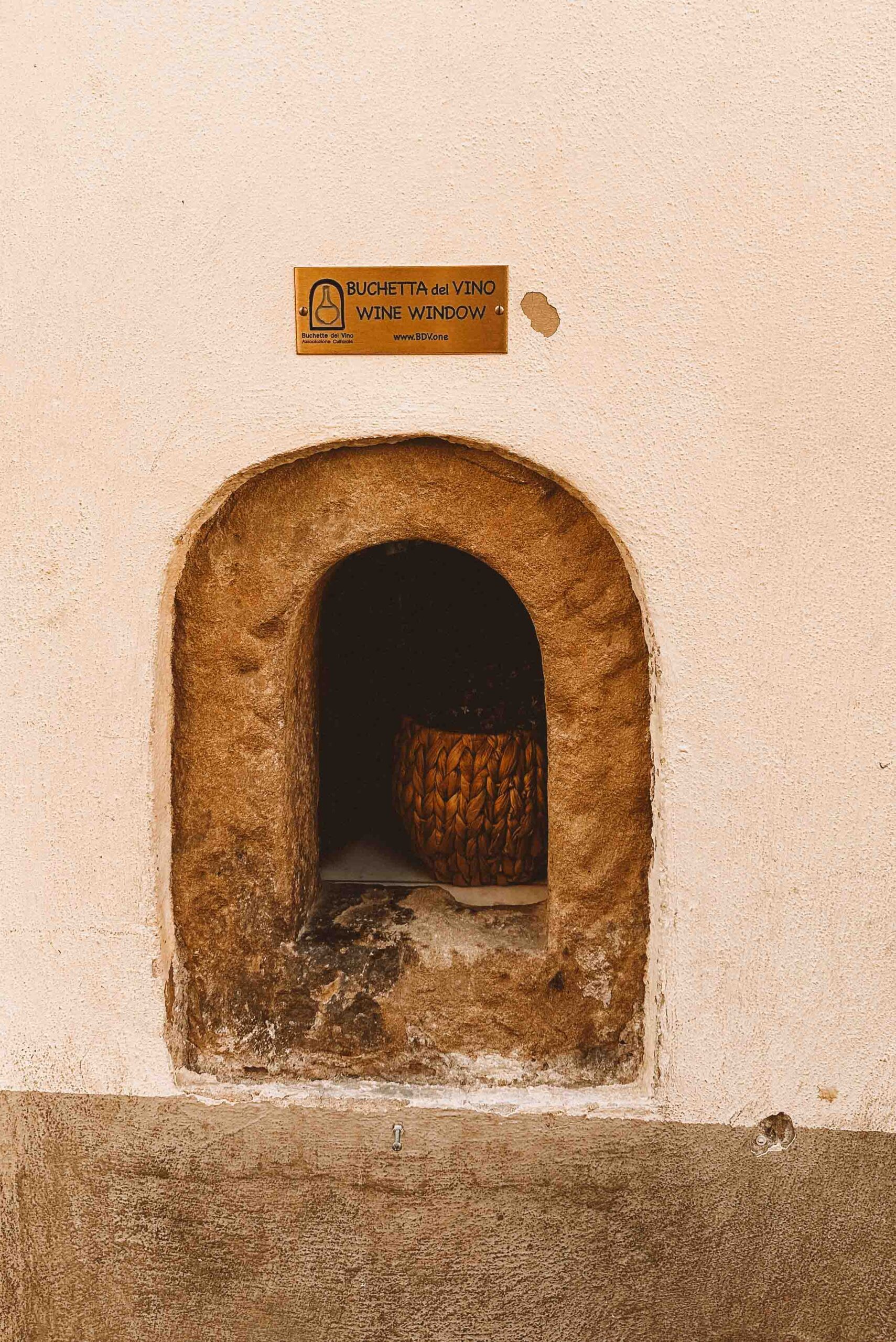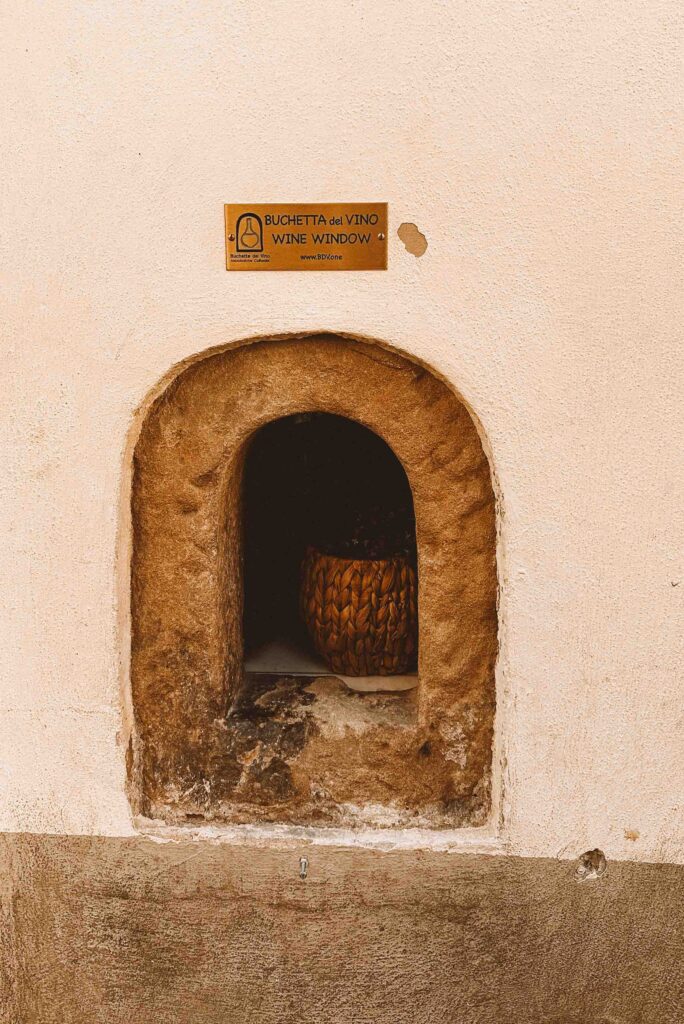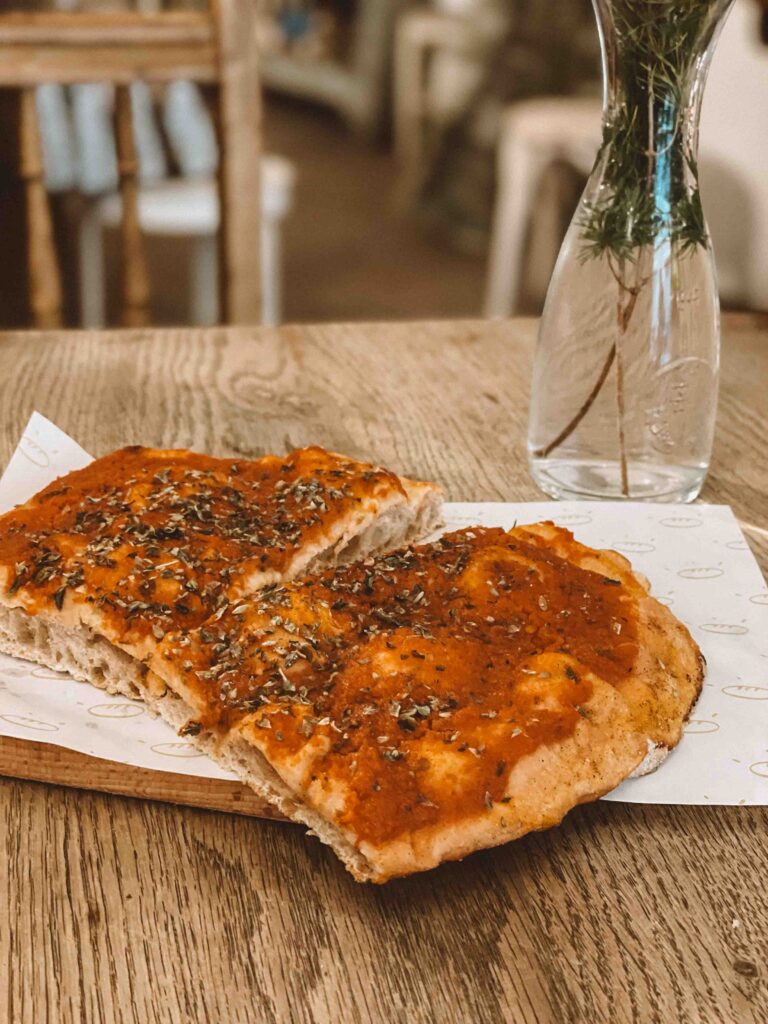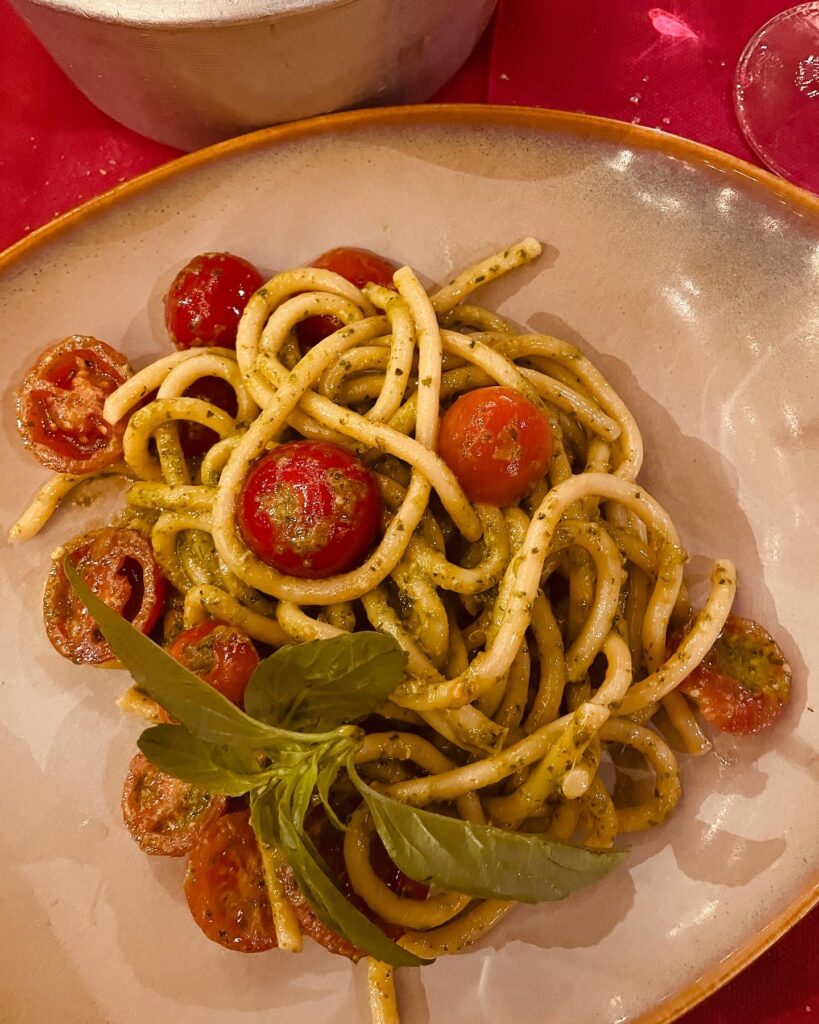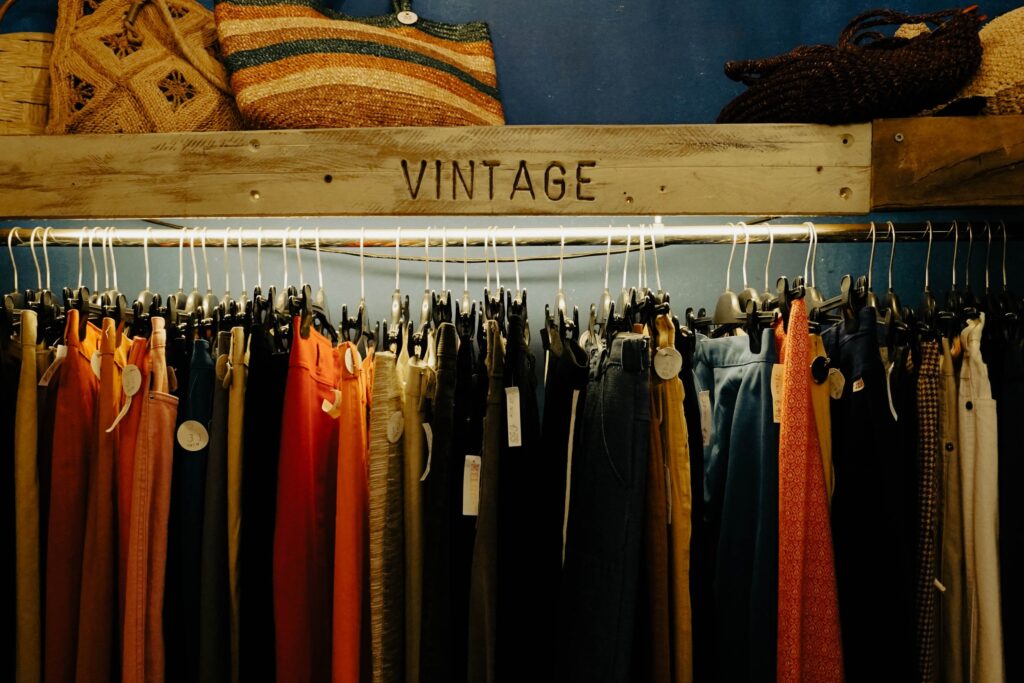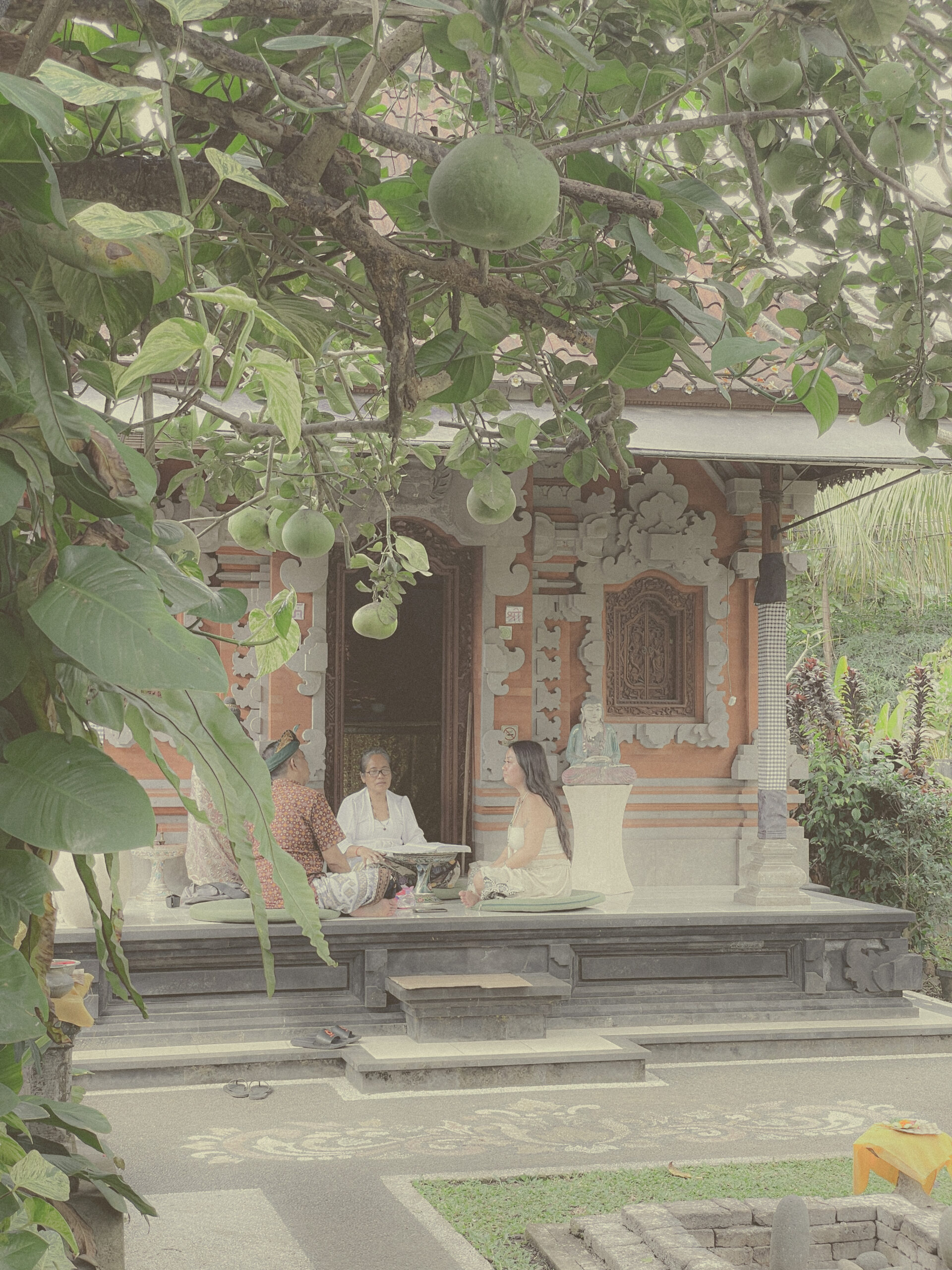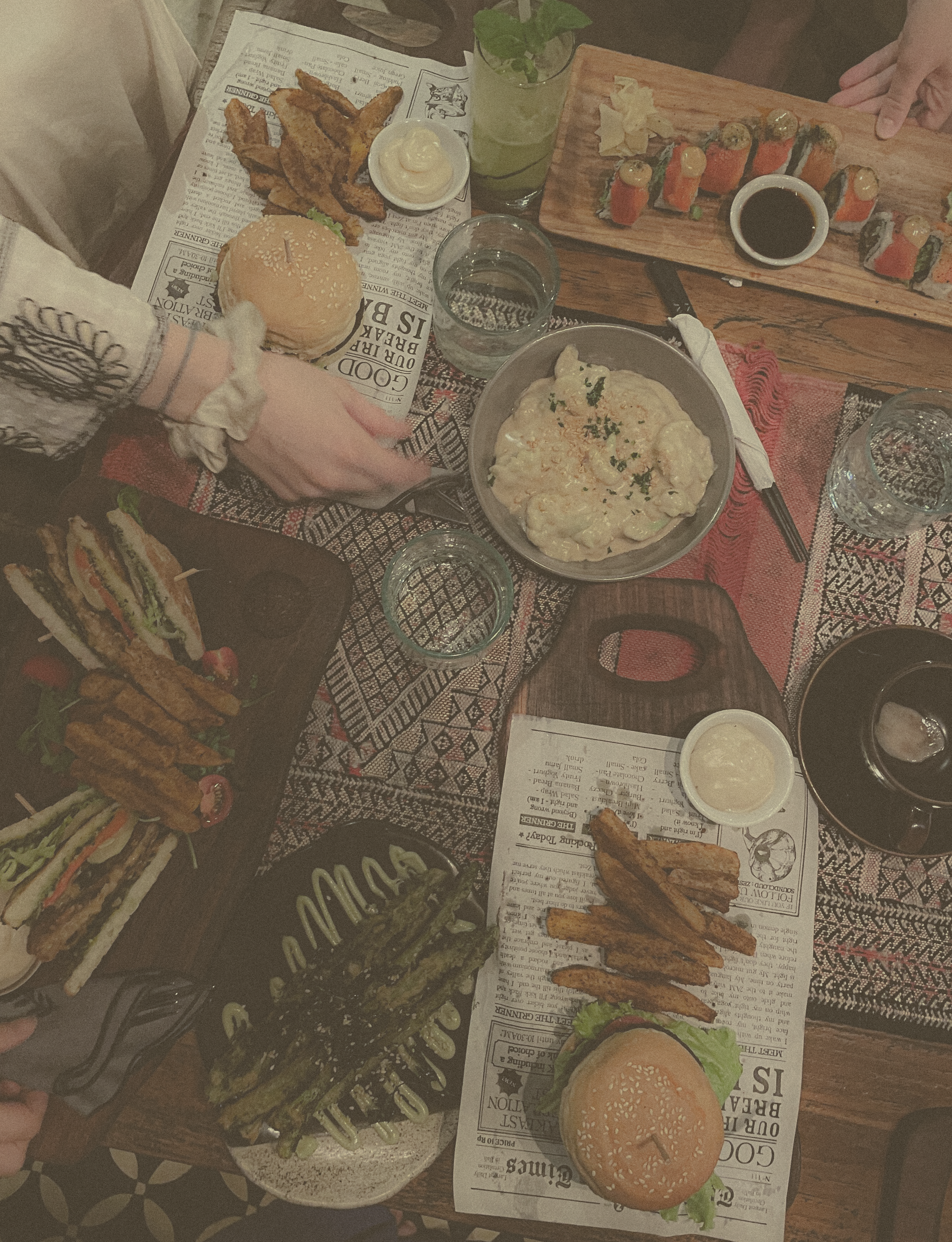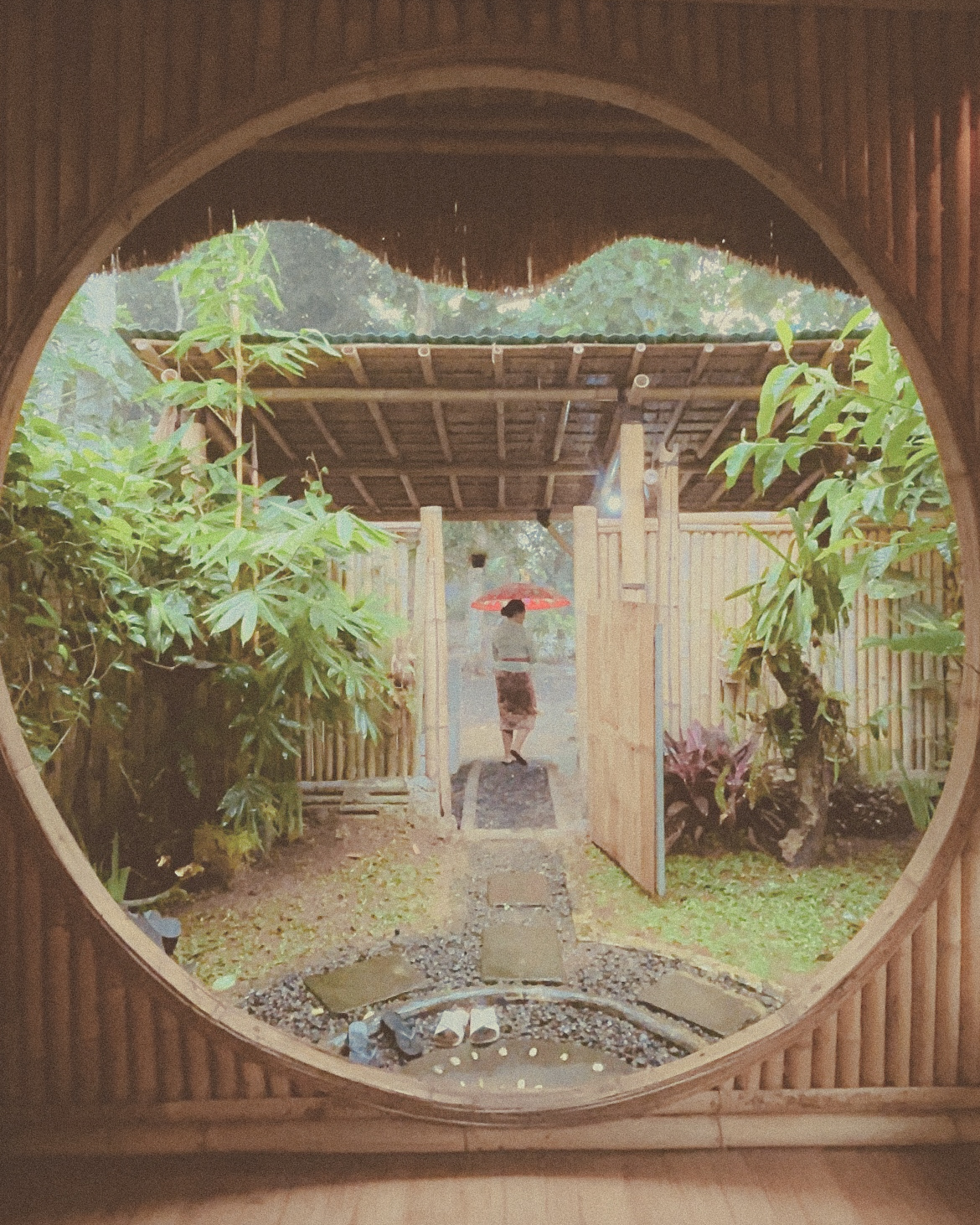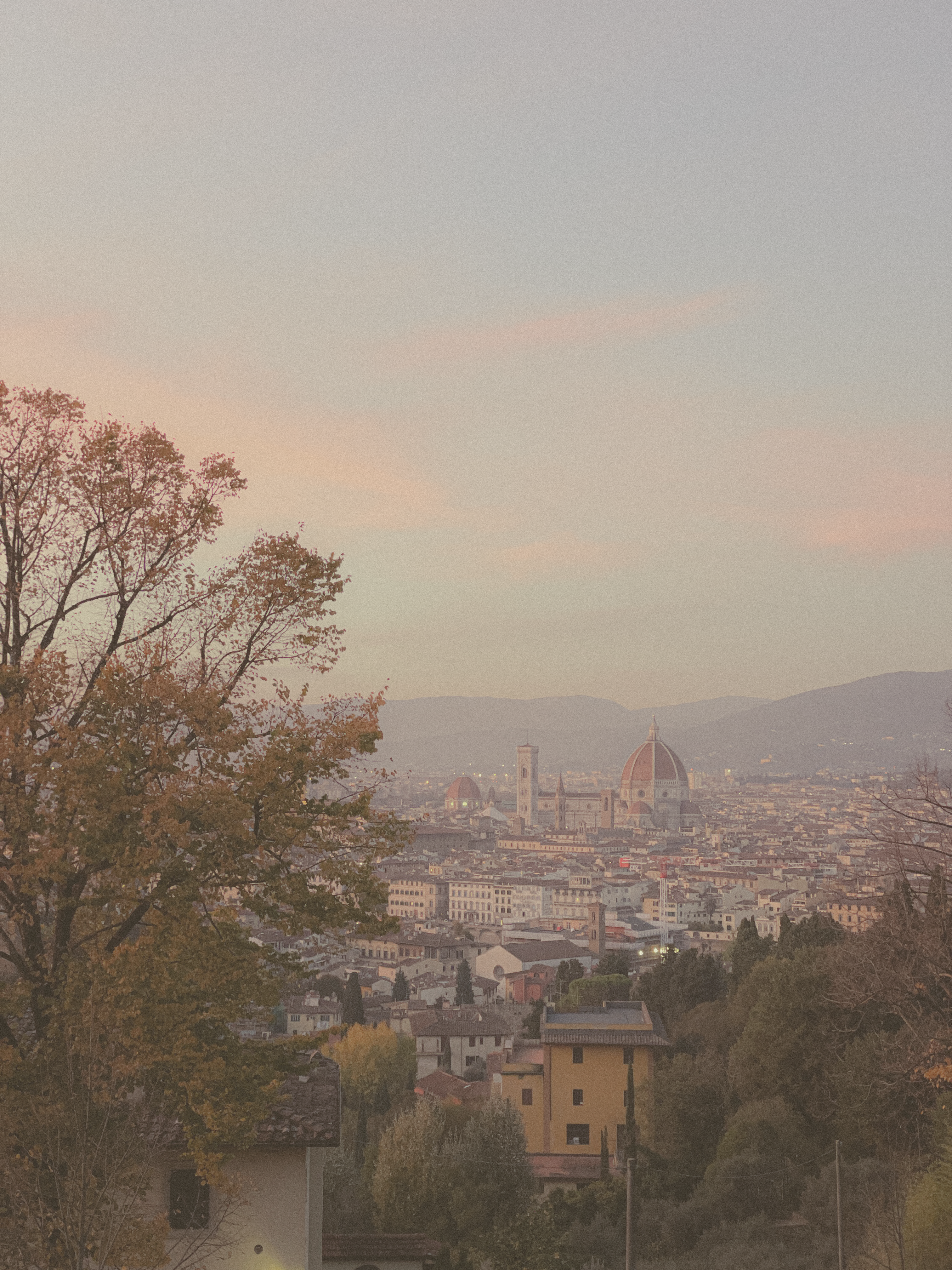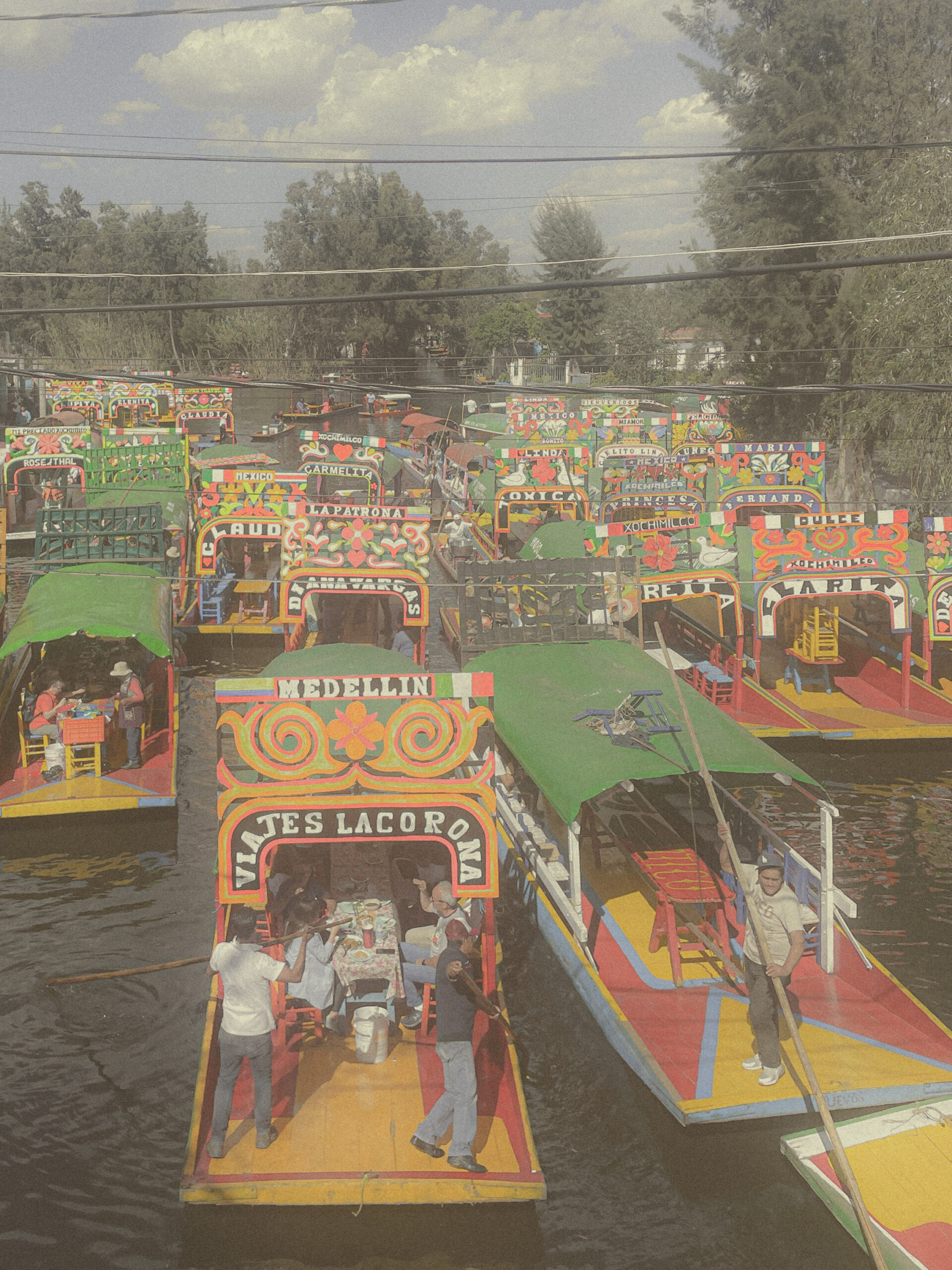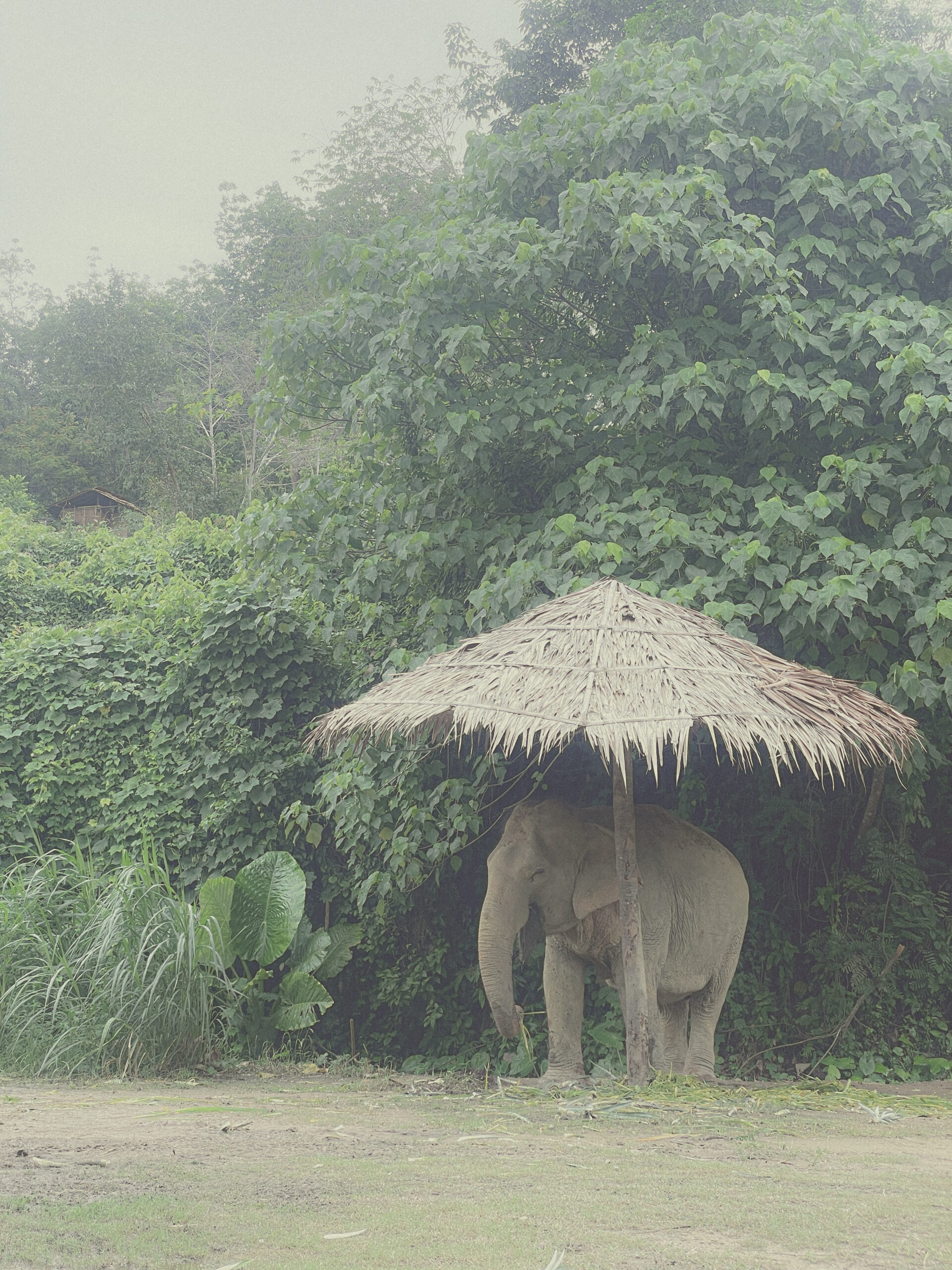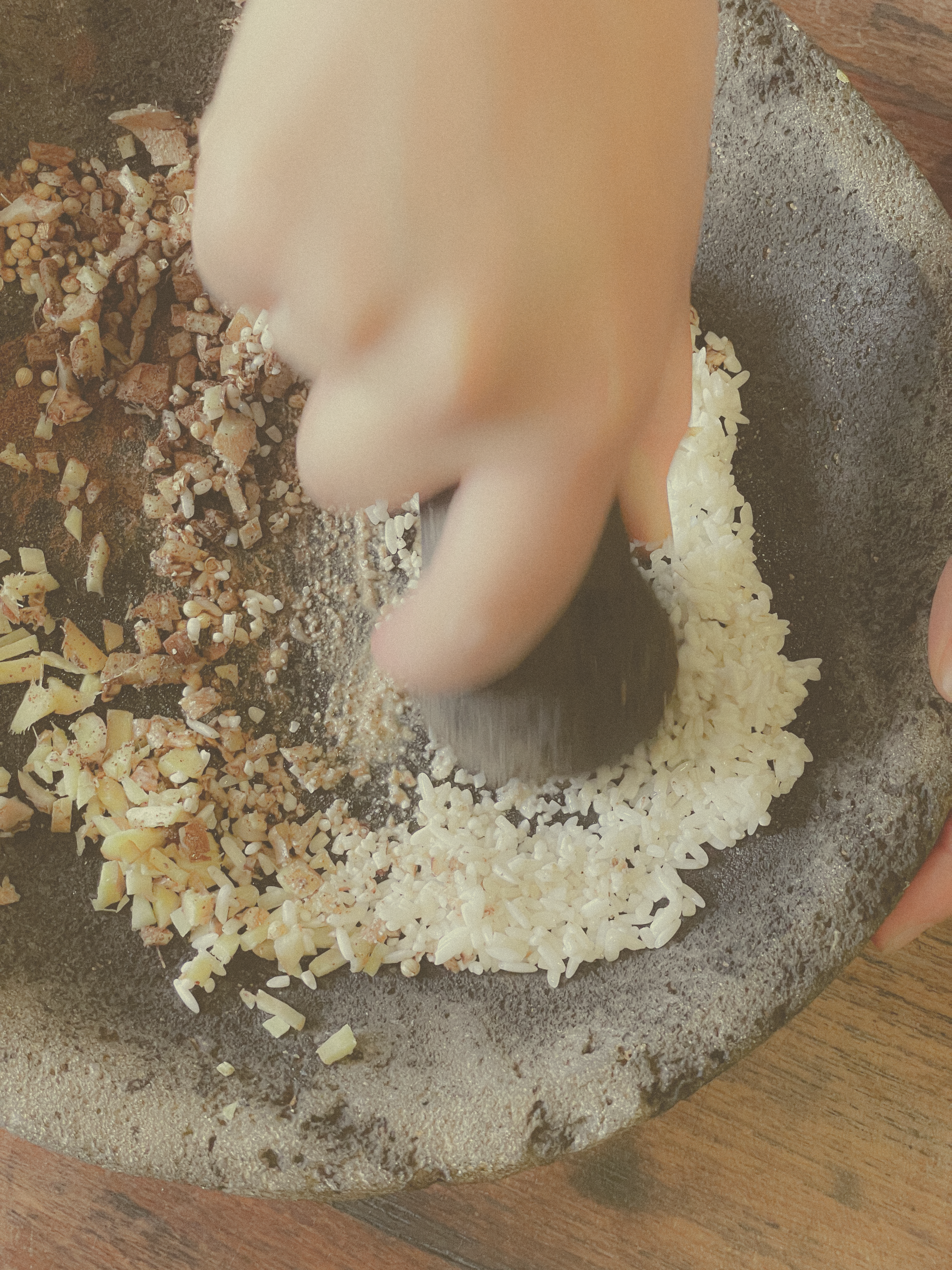If you find yourself walking down the picturesque Via Santo Spirito in Florence’s charming Oltrarno neighborhood chances are you will come across a crowd of people gathered near a tiny window on the facade of a building. While you might be wondering what’s going on, it won’t be long before you see a hand pop out with a glass of wine, or more popularly, an Aperol spritz.
You’ve found the famous wine window of Florence. While this wine window was a staple of Renaissance life, it just recently re-opened during the pandemic!
The Florence wine windows, or “buchette del vino” in Italian, have a unique and fascinating history in Florence, Italy. Their intriguing origin can be traced back to the Renaissance era, a period of remarkable cultural and artistic flourishing in Florence. These wine windows served as a means for wine merchants to sell their products directly to customers on the streets while maintaining physical distancing and preserving the quality of their wines.
Origins: The wine windows, also known as “buchette del vino,” first made their appearance in the 17th century when affluent families sought a way to sell their wine directly from their private cellars. These windows served as a convenient and discreet means of conducting business without inviting the public into their homes.
Design: Typically positioned at a height perfect for serving wine to customers on the street, these windows boasted architectural details that harmonized with the façade of the building. Ornate embellishments and intricate craftsmanship added a touch of elegance to these functional openings.
Functionality: To procure a bottle of wine, customers would simply knock on the window, signaling a servant to open it. The servant would then accept payment and provide a filled flask of wine in return. Some of these wine windows even featured a small metal tray where money could be placed, which would later be disinfected with vinegar, demonstrating an early understanding of hygiene and disease prevention.
Taxes and Regulations: The installation of these wine windows coincided with a decree in 1559 by Cosimo de’ Medici, allowing noble families to directly sell their vineyard wines from their palaces. What set this system apart was its accessibility to the public. Passersby on the street could easily signal their desire to purchase wine by knocking on the integrated windows of the Renaissance palaces. A servant would collect the customer’s empty bottle and payment, refill the bottle from the cellar, and hand it back out to the street.
Decline: Over time, the rise of wine shops, along with changes in social behavior and laws, led to a gradual decline in the use of wine windows. Many of these historic features were either sealed or incorporated into modern renovations, fading into obscurity.
Revival: Interestingly, the COVID-19 pandemic brought about a minor revival of these unique architectural elements. In Florence, a few businesses reopened their wine windows, utilizing them to serve not only wine but also coffee and other goods, all while adhering to social distancing guidelines. This unexpected resurgence reminded people of the intriguing history and practicality of the wine windows, breathing new life into these time-honored fixtures.
The wine windows of Florence serve as a unique architectural symbol of the city’s history and culture, and the society’s relationship with wine during a specific period in time. They also reflect the innovative ways in which people adapted to the societal norms and regulations of their era.
Where is the Florence Wine Window?
Located at Via Santo Spirito 21R in Florence, there is a charming wine window adjoined to the popular Babae Restaurant. In the past, one would knock on the window for service, but now there is a bell in a gold leaf, conveniently placed next to the window. While the wine window offers a fun experience, I highly recommend exploring the restaurant itself.
Unlike many establishments in Florence, Babae is open from breakfast to dinner without interruption, a true rarity. Their menu deviates from the traditional Italian fare that Florence is renowned for, embracing a more contemporary and innovative approach. Indulge in delectable dishes like Tuna Tartare and even relish in their delightful brunch offerings. If you’re a student or digital nomad, they are laptop friendly, but if you’re just having a coffee and working, I’d recommend avoiding the busy times during lunch and dinner because you might not find a table.
Getting a bicchiere di vino (glass of wine) from the wine window in Florence is one of the most unique things you can do in Florence, so enjoy and remember that you’re doing something that the locals of Florence in the 17th century were doing too! How cool is that?

